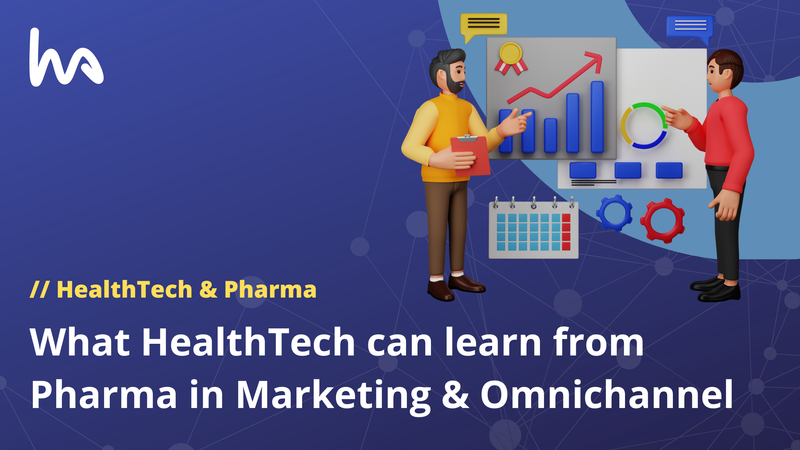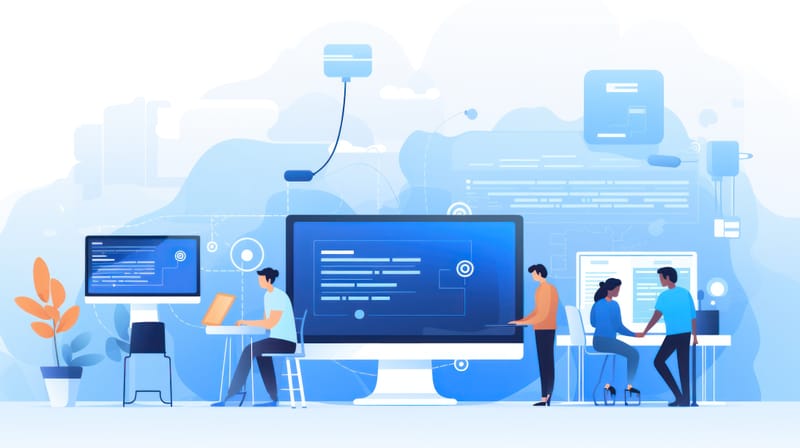Marketing is a challenging arena. It’s certainly not for the faint-hearted. Marketing requires knowing your audience and acting proactively to meet their demands.
And today’s consumers are demanding. But that’s not the only challenge. Their demands keep evolving rapidly. A successful marketer knows those demands in advance and acts without wasting time.
In this guide, we will talk about one such trending market concept that has the potential to improve your customers’ experience with your brand - leading to better conversions and a sustainable prominence in the market.
What is the Omnichannel Marketing approach?
The word ‘Omni’ means “all or everywhere”. Piece it back into ‘Omnichannel Marketing’ and it essentially means a concerted marketing approach that uses all possible channels of delivering your marketing message to your target customers.
By a channel, we mean any platform, digital or physical, that your potential customers use. It includes all the venues they visit (industry conferences, stores, events, etc.) as well as the digital spaces (social media websites, forums, websites, etc.) and types of devices they use (tablets, smartphones, smartwatches, etc.).
You can be sure that your marketing strategy is Omnichannel only if:
- It’s omnipresent i.e. available at every channel, platform, venue, and device.
- It sends out exactly the same brand signals regardless of the channel
- It is integrated across all platforms so that a customer doesn’t feel that she has crossed over to another platform during the same interaction.
- It is tailored according to the stage at which a customer is in her journey
The ultimate objective of an Omnichannel Marketing approach is to meet your customers where they want to see you, in the way they prefer to interact with your brand and to make their purchase as effortless for them as possible.
What is the difference between Omnichannel and Multichannel Marketing approaches?
There seems to be confusion between these two marketing terms. Let me set that straight first.
As I’ve defined it earlier, an Omnichannel Marketing strategy is one that is present everywhere and keeps the customer’s experience as its most important factor.
On the other hand, multi-channel marketing is simply the traditional marketing approach but delivered through more than one channel. This one also pays little attention to the customer’s stage and the subtle nuances of every channel. It’s basically blasting the same message to customers on more than one platform.
Benefits of an Omnichannel Marketing approach
Despite the larger investments required for implementing an Omnichannel Marketing, it pays itself off and then some.
Loyalty - When a customer receives messages tailored to her specific needs, she feels that this brand understands her. As a result, she is more likely to pay attention, buy from them, refer them to others, and keep coming back for more.
Customer Insights - An omnichannel approach to marketing helps you collect granular data on customer behaviours and preferences. This can prove to be a gamechanger for you by helping you further improve the customisation and meet the customers exactly where they want to interact with your brand.
Quicker conversion - When you’re everywhere and all your messages are integrated and tailored, you give your customers little time to come up with reasons not to buy. They’ll ask you questions with unmatched ease giving you the chance of removing their doubts. That can result in a shorter awareness-to-onboarding journey.
When you ace these aspects, the obvious result is an improved bottom line and a thriving business.
ClickZ, a leading digital marketing community, compared the results of single-channel marketing with the results of an omnichannel marketing approach. They found a significant improvement in 4 key elements:
1. Engagement rate
2. Frequency of purchase from the brand
3. The average value of the order customers placed
4. The frequency of repeat purchases
These results clearly point in only one direction, and that is the adoption of an omnichannel marketing approach, regardless of the type of product or service you offer.
My Proven Omnichannel Marketing Model
Over the years, while working on the development and implementation of omnichannel marketing projects, I’ve developed a simple yet effective model and fine-tuned it for even better results.
I’m sharing my tried and tested strategy that has four essential elements built into it. Take this strategy, adjust it based on your business dynamics, and fire up your marketing engine.
My 2(2) Omnichannel Marketing Model Explained
First things first. You have to build an integrated web of channels that communicate data to all other channels in real-time. For example, if a customer asks a few questions via Messenger and later on walks into one of your stores, that chat must be available to the salesperson. That’ll help him know at which stage the customer is and what exactly is required to get a conversion.
So, the foundation of this 2(2) Omnichannel Marketing model is a well-connected all-channel network. All four elements that I’ll be discussing here should be built on the conditions for an omnichannel marketing approach that I’ve already discussed.
Here are the four essential parts of this model:
1. Social media campaigns
Design and execute your social media campaigns to raise brand awareness and drive traffic to your website. All your social channels should point towards your website.
In addition to the traditional social channels, keep an eye on the latest developments and upcoming platforms and content formats. For example, back in early 2021, an audio-based social channel called ClubHouse saw explosive growth. Many brands rode that wave and raked in phenomenal results.
Here are two trends you need to pay attention to:
- Video content - You cannot ignore the power of videos, especially short ones while designing your social media campaigns. All major networks have jumped on this bandwagon and they're offering short video features like Reels (Instagram and Facebook) and Shorts (Youtube and TikTok). If you haven’t still thought of creating videos for your social campaigns, it’s time you pay attention to it.
- Influencer marketing - It is similar to brands featuring celebrities in their TV ads. It is often considered a pricey activity but influencer marketing has done wonders for brands from all over the world. Consider using this powerful medium but not before you’ve done all your due diligence on which influencer will be most effective for your target audience.
2. An engaging website with SEO and Social Media engagement
I cannot say enough about the role of your website in running any successful marketing campaign. This is your storefront in today’s digital world.
Invest in your website’s design, content, SEO, and ease of use factors. This investment will pay you back many times over.
In addition to the classic guidelines about what an effective website is, here are my two practical tips that’ll give you even more mileage:
- Use Marketing Pixels - A marketing pixel is a small piece of code that lets you track and collect data on your website visitors’ behaviour while they’re browsing. Once they leave the website, the collected data can then be used to serve targeted ads to your website visitors in their social media feeds. While it seems like a tiny activity, a pixel can help you increase your social media ads’ ROI significantly.
- Active CTAs prompting users to sign up via email - Email is still considered to be one of the most powerful marketing mediums. To make it work for you, the first thing you need is the email addresses of your target or current customers. To build your email list, offer valuable digital content assets like newsletters or free ebooks/reports (lead magnets) in exchange for their emails. Place clear call-to-actions (CTAs) on all relevant areas on your website. This will keep your email list growing, increasing your sales volumes as a result of the email marketing campaigns you’ll be running in the future.
- Automate your email campaigns - Once you have a list of relevant emails, you can design an email marketing campaign depending on the action(s) your audience has already taken or the action(s) you want them to take. Here’s a link to a complete guide on effective email marketing.
- Don’t ignore offline campaigns - After setting up robust online marketing campaigns on all digital channels, it’s time to create an offline marketing campaign that is in line with your online campaign. By doing this, you are closing the loop that leads to an increase in the final conversions.
Marketing is all about staying aware of your customers' changing preferences and staying ahead of them.
Omnichannel marketing is one such trend that has become inevitable in 2022 if you want to see lucrative ROIs from your marketing campaigns.
Go all out and ride this wave while your competitors are still on the fence.
Have questions about Omnichannel Marketing? Feel free to start a conversation over at my LinkedIn profile.





